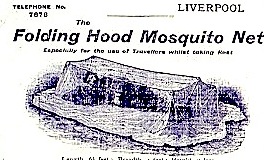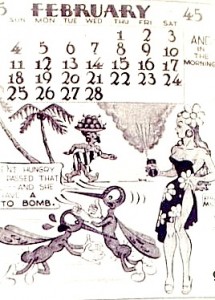First recorded history of a mosquito net (canopy) – made from flax – is in Egypt. The above is an hieroglyph in the burial chamber of Queen Meresank III – 2,560 B.C.
Scattered anecdotes of bed-net use incl. Punjab fisherman (Marco Polo), China (Ching Dynasty), Japan (Muramichi era), PNG (woven baskets), Indonesia, Thailand, The Gambia.
 With advent of explorations, the British showed a passion for bed-nets. Dr. Livingstone wrote ”the inventor of mosquito screens deserves a statue in the West Minster Abbey”.
With advent of explorations, the British showed a passion for bed-nets. Dr. Livingstone wrote ”the inventor of mosquito screens deserves a statue in the West Minster Abbey”.
When Ronald Ross discovered (1897) the Anopheles mosquito transmitted malaria, disease control was taken seriously, and the use of bed-nets was promoted.
 During WWII, the USSR & US army successfully used DDT to treat uniforms, reducing deaths from malaria. This concept of treated fabrics was applied to bed-net trials in the 80s – Kenya, Tanzania – now with pyrethroids – which has become the most cost effective forms of malaria control.
During WWII, the USSR & US army successfully used DDT to treat uniforms, reducing deaths from malaria. This concept of treated fabrics was applied to bed-net trials in the 80s – Kenya, Tanzania – now with pyrethroids – which has become the most cost effective forms of malaria control.
